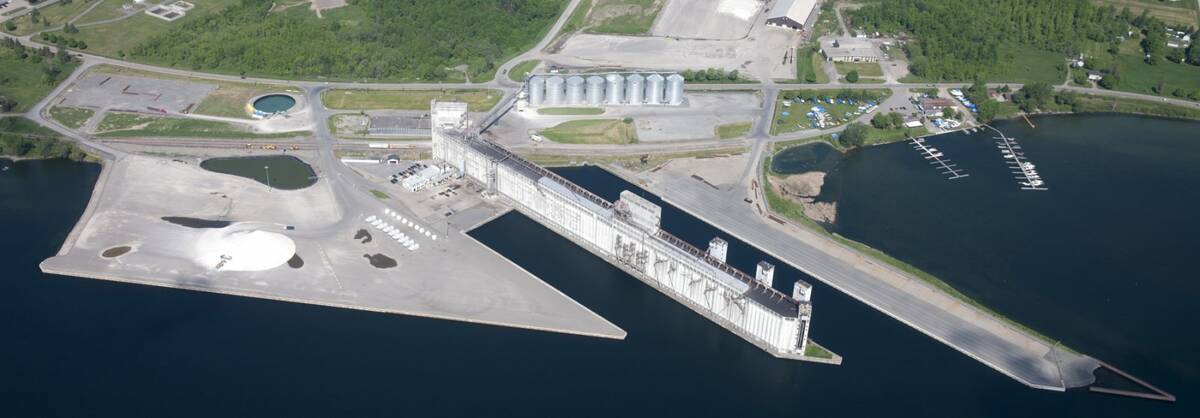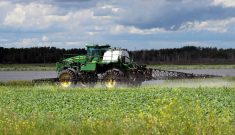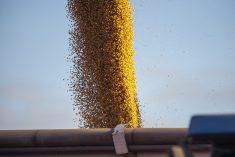An expansion is in the works for the Port of Johnstown’s agricultural product handling capacity – a development investors in the project say will provide opportunity for greater fertilizer independence, as well as crop exports from both Western and Eastern Canada.
Why it matters: An eastern Ontario fertilizer company wants to expand shipping options for Canadian farmers.
The Port of Johnstown is a trimodal terminal on the St. Lawrence Seaway with access to the Canadian National Railway and global marine trade routes. Canadian fertilizer manufacturer V6 Agronomy and the Township of Edwardsburgh-Cardinal announced in May, the two parties have entered a long-term partnership to accelerate the flow of crop nutrition products “across Canada and beyond.”
Read Also

Claas brings 1000 Series SP forage harvesters to Canada
In mid-August, Claas unveiled its new line of Jaguar forage harvesters at an event in Visalia, California, deep in the heart of that state’s dairy region.
Going forward, the Port of Johnstown said in a release it will serve as V6 Agronomy’s Eastern Canadian import hub for fertilizer inputs and logistics, helping to “to re-shore and modernize Canada’s fertilizer supply chain, improve food system resilience, and reduce the carbon footprint of fertilizer distribution.”
The new terminal facility is intended to be operational in late 2025.
Ryan Brophy, chief executive officer of V6 Agronomy, said in the release the partnership will reshape how crop nutrients move in and out of (Canada), adding the investment will also open a “a new export channel for high value Western Canadian pulse crops.”
The Port expansion is part of a wider three-pronged strategy for V6, which includes the construction of a fertilizer granulation facility in Maitland, Ont., an emissions research partnership with Trent University, and the implementation of carbon and nitrous oxide tracking across fertilizer and soil amendments.
In a later statement to Farmtario, Brophy emphasized the need to increase interprovincial collaboration by moving cargo by rail and sea vessels “in a cost effective and environmentally sustainable manner.”
“V6 Agronomy will be working in very close collaboration with the Port of Johnstown and CN Rail to efficiently cycle dedicated railcar equipment west from the Port, containing V6 fertilizers, contract cargoes of enhanced efficiency products and commercial phosphates,” said Brohy. Once discharged in the Prairie Provinces, the company will then be “matching-back the same equipment,” after clean-out and inspection, with prairie grains.
“We’re working presently with a number of Canadian Grain Commission licensed inland terminals in Saskatchewan, for example, that are seeking alternative export opportunities for high value Canadian Prairie crops such as lentils, chickpeas, flax and durum wheat and a dedicated and predictable supply of crop nutrients by rail for their growers.”
Brophy also said The Port of Johnstown is “the perfect deep-water facility” to store such crops for loading into “handy-sized salties” (ocean-going vessels) as either part of total cargo load.
From there, direct shipments to the Mediterranean, Middle Eastern and North African markets are possible.
“All of the equipment required for this new opportunity is already in position at the Port, which is a fully licensed grain terminal. Given that Port of Johnstown’s primary focus is to service the storage and handling needs for 1,600 plus eastern Ontario farmers, local grain corn, soybean and spring wheat will remain priority during the peak season,” he said.
Select Prairie crops will begin to arrive in January by rail for transfer into storage, said Brohy.
“The Port’s management team has brilliantly allocated an initial 20,000 metric tonnes of storage space for this new project. We’re anticipating that additional storage will need to be constructed beginning in 2027 in order to accommodate additional export cargoes, so as not to interfere with the critical local volumes.”















